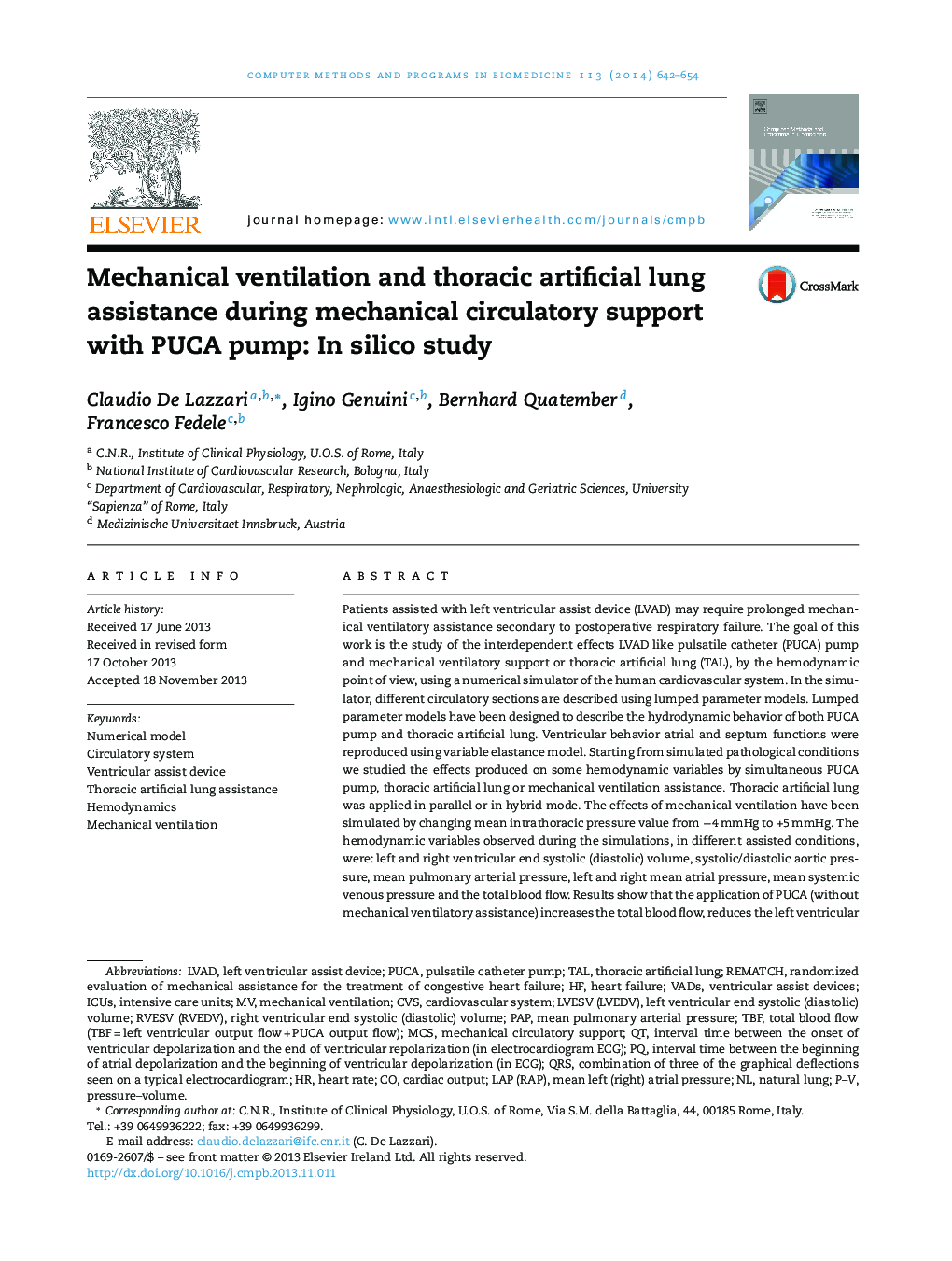| Article ID | Journal | Published Year | Pages | File Type |
|---|---|---|---|---|
| 468478 | Computer Methods and Programs in Biomedicine | 2014 | 13 Pages |
Patients assisted with left ventricular assist device (LVAD) may require prolonged mechanical ventilatory assistance secondary to postoperative respiratory failure. The goal of this work is the study of the interdependent effects LVAD like pulsatile catheter (PUCA) pump and mechanical ventilatory support or thoracic artificial lung (TAL), by the hemodynamic point of view, using a numerical simulator of the human cardiovascular system. In the simulator, different circulatory sections are described using lumped parameter models. Lumped parameter models have been designed to describe the hydrodynamic behavior of both PUCA pump and thoracic artificial lung. Ventricular behavior atrial and septum functions were reproduced using variable elastance model. Starting from simulated pathological conditions we studied the effects produced on some hemodynamic variables by simultaneous PUCA pump, thoracic artificial lung or mechanical ventilation assistance. Thoracic artificial lung was applied in parallel or in hybrid mode. The effects of mechanical ventilation have been simulated by changing mean intrathoracic pressure value from −4 mmHg to +5 mmHg. The hemodynamic variables observed during the simulations, in different assisted conditions, were: left and right ventricular end systolic (diastolic) volume, systolic/diastolic aortic pressure, mean pulmonary arterial pressure, left and right mean atrial pressure, mean systemic venous pressure and the total blood flow. Results show that the application of PUCA (without mechanical ventilatory assistance) increases the total blood flow, reduces the left ventricular end systolic volume and increases the diastolic aortic pressure. Parallel TAL assistance increases the right ventricular end diastolic (systolic) volume reduction both when PUCA is switched “ON” and both when PUCA is switched “OFF”. By switching “OFF” the PUCA pump, it seems that parallel thoracic artificial lung assistance produces a greater cardiac output (respect to hybrid TAL assistance).Results concerning PUCA and TAL interaction produced by simulations cannot be compared with “in vivo” results since they are not presented in literature. But results concerning the effects produced by LVAD and mechanical ventilation have a trend consistent with those presented in literature.
